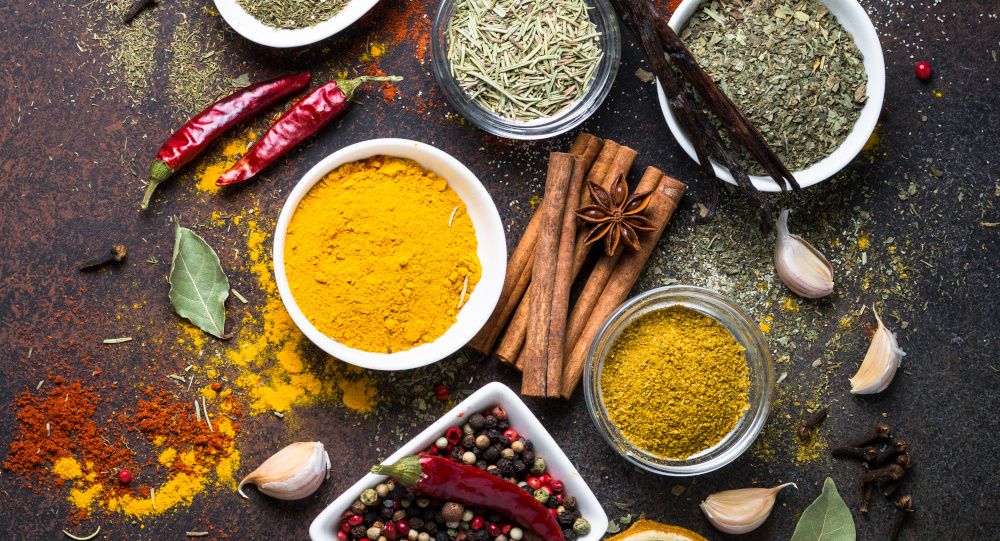Flavor Sophistication: Food and drink customers are ready to experiment
Global and exotic flavors can give your products the sophisticated flair consumers are looking for.
Photo © Nadianb - Stock.adobe.com

As Nutritional Outlook1 pointed out in its story, “2022 Flavor Trends for Food and Beverage,” consumers are very open to new experiences in flavor, including those inspired by global cuisine and exotic, novel ingredients. A good example of how an ordinary product can be elevated by global flavors is jerky. The protein-rich snack has gotten more sophisticated over the years, using higher-quality ingredients and utilizing globally inspired flavors such as jalapeño, teriyaki, and mango habanero. Now, we are seeing regional styles of jerky being brought to market such as biltong, which is a South African version of jerky.
According to the “2022 Taste Charts” report from Kerry (Tralee, Ireland), cuisines such as Asian and Mexican have been mainstream for the past five years, but more culturally specific cuisines such as Thai, Korean, Japanese, Jamaican, and Oaxacan are “Up & Coming” and among the fastest-growing cuisines of the last three years, the report notes. Meanwhile, cuisines such as South African fall under the report’s “Emerging” cuisine category—the fastest-growing flavors of the previous year.
What’s clear is that consumers are getting more exposure to specific cultures, and food is a common gateway to different cultures.
Meat and Meat Alternatives
Meat is a useful example in this case because meat is historically a great vehicle for flavor. Plant-based meat and cheese alternatives have also become a valuable place to explore different flavor profiles and cuisines. While these alternatives are getting better at replicating the taste and texture of meat and cheese, it’s the use of spices that truly defines various styles—think pepperoni, chorizo, pepperjack, etc.
Based on data from Innova Market Insights’ Innova Database in 2021, Kerry breaks down the “Taste Lifestyle” of plant-based meat and cheese alternatives, showing that the “big flavor movements” of the plant-based meat category are chili, mushroom, and cheese, while the flavor movements of the plant-based cheese category are herbs, garlic, and smoked. Kerry also notes that in 2021, significant flavor introductions in the plant-based meat category included: more spices, Mediterranean, Italian, Basil, and Mexican cheese types. In the plant-based cheese category, significant flavor introductions for 2021 included mushroom and jalapeño chili.
Familiar flavors like Italian spices or Mexican cheeses give people a point of reference, but as the space continues to grow and more consumers become accustomed to plant-based alternatives, there will be even greater exploration of exotic flavors and cultures like we’re seeing throughout the food and beverage space.
Healthy Flavors
Certain flavor combinations can also impart positive health associations. Of course, ingredients like citrus and elderberry are associated with immunity in function and therefore in flavor. But increasingly, these flavor combinations are also becoming more sophisticated. Orange and lime, for example, are being switched out for more exotic options like yuzu or blood orange. Flavor supplier Virginia Dare (Brooklyn, NY) cites “wellness flavors” as the top flavor trend of 2022. The flavor combinations lean toward botanical and aromatic, using ingredients that feel like they’re sourced from a farmers’ market and apothecary. According to Virginia Dare, combinations like Passionfruit Chamomile, Golden Chai Turmeric, Ginger Chai Apple Cider Vinegar, and Goji Aronia Berry are just some of the flavor combinations that call to mind wellness categories such as relaxation, immunity, digestive health, and beauty, respectively.
Beverages are a natural vehicle for these flavors and therefore lead the wellness flavors trend, says Philip Caputo, marketing and consumer insights manager for Virginia Dare. “Herbal teas—the original wellness beverage—are rooted in ancient eastern medical systems, made from a mélange of botanicals with therapeutic properties. As interest turns back to holistic healing, consumers are reacquainted with earth’s functional ingredients, some of which contribute flavor. Modern beverage brands are taking inspiration and leveraging trust in longevity.”
Dispersible powders could be a versatile and cost-effective way to deliver these flavors to consumers. Alternatively, differentiation with more sophisticated adult flavors can offer gummy manufacturers an edge in the dietary supplement category as well.
While there will always be a space for familiar, comfortable, and nostalgic flavors, we live in a much more global society, with consumers being drawn to more exotic flavors and experiences. What’s niche now may be mainstream tomorrow.
Reference
- Grebow J. “2022 Flavor Trends for Food and Beverage.” Nutritional Outlook. Published December 30, 2021.

Kaneka Nutrients to unveil new consumer research on menopausal women at Vitafoods Europe 2024
April 26th 2024The company will reveal the results of the research that is based on live feedback from 200 menopausal women who took 200 mg per day of Kaneka Ubiquinol over two-months, monitored the effects, and recorded their observations.
Rousselot to showcase new collagen peptide research and targeted solutions at Vitafoods Europe 2024
April 25th 2024The company will be highlighting new research that demonstrates the ability of its Peptan collagen peptide brand to support sleep quality, reduce gastrointestinal discomfort, and enhance skin health, including density, hydration, and elasticity.